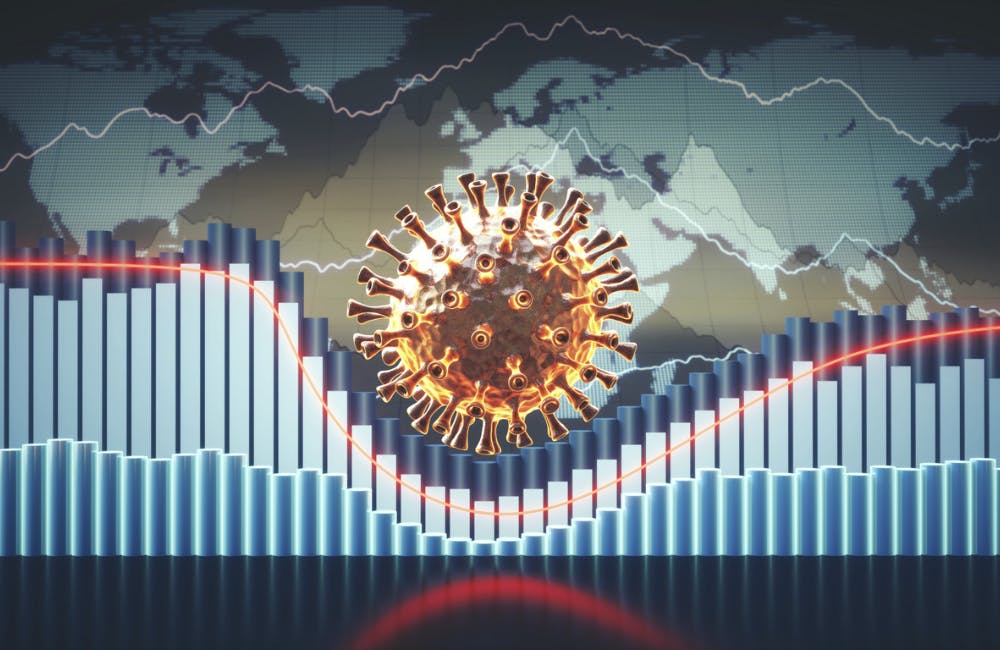DOD Trauma Center’s Data Supporting Pandemic Response
New data capabilities to bolster its COVID-19 response and prepare for future medical challenges.

The COVID-19 pandemic uncovered new data challenges and lessons learned for the Defense Department’s Joint Trauma System (JTS), whose COVID-19 registry is informing improvements in data management to make better clinical decisions for military service members.
“Data is really going to be the foundation of a lot of the COVID initiatives because you need the data to make the best clinical decisions,” said JTS Deputy Chief Dr. Mary Ann Spott.
The office launched last year its COVID-19 registry to support the DOD and Military Health System overall. The registry collects and aggregates pandemic response data in Military Treatment Facilities — including risk factors, practice patterns, safety and effectiveness of COVID-19-related treatments and outcomes. Medical professionals use the data to determine responding to pandemic needs.
JTS Chief Col. Stacy Shackelford, also a medical doctor, said the office leveraged the same practices used in creating its Trauma Registry.
“We’re working on applying the same practices for improving trauma care on the battlefield to improve COVID care to our patients throughout the DOD,” she said.
The organization utilized its framework featuring performance improvements, development of guidelines and data collection, which “overlayed nicely for the pandemic,” Spott said.
In a previous initiative, JTS collaborated with Uniformed Services University to develop an Infectious Disease Registry. This work helped accommodate COVID-19 data collection, and it cemented best practices and processes, which prepared JTS for its COVID-19 response, Spott added.
In developing the COVID-19 Registry, Spott said “it was really just a matter of retraining,” since JTS had already developed previous registries to advance data collection.
Developing the COVID-19 Registry didn’t come without its challenges, Shackelford noted. The demand on the IT infrastructure of the registry and the need for specialized skills for the registrars, as well as the processes it takes to run a registry, made the launch difficult and time consuming.
Plus, a lot of the information that was coming in was handwritten, which took a longer amount of time to transfer and determine documentation for capture.
“We should really take this to heart. We had the infrastructure for trauma, and we’re building the infrastructure for the pandemic, and I really think it’s our job to look into future major health threats to build this in advance,” Shackelford said.
Moving forward, JTS will look for ways to improve the collection of digital and handwritten records to increase efficiency and accuracy, as well as keep data quality at its highest standard.
Especially with implementation of DOD’s new electronic health record, MHS GENESIS, leveraging automation can enable data exchange and access to other data sets to improve performance and simplify record discovery. Also, having a joint lexicon could help standardize reports, and reduce misinterpretation.
“It makes it hard from a data collection and analysis standpoint to try to capture those data points that we’re looking for if the individual at the point of care has the ability to enter their own data point. It really interferes with the ability to collect and analyze that data,” Shackelford said.
Because of the sudden onset of the pandemic, JTS has had to quickly learn and adapt to new methodologies, which contributed to the lack of standardization, Spott said. Overtime, JTS has resolved a lot of the initial challenges, but the organization will continue to work to standardize language and data input across the enterprise.
“Now that we understand how to build a registry and drive performance improvement in a pandemic, it is really our responsibility to look for future health threats,” said Shackelford. “These are going to be really, really important to track. I think we’ll be looking to expand JTS … where it’s more than just trauma, but use similar processes.”
This is a carousel with manually rotating slides. Use Next and Previous buttons to navigate or jump to a slide with the slide dots
-

Trump's HHS Secretary Pick Eyes Transparency, Data Access
Nominee Robert Kennedy wants to improve transparency and data access to empower patients and enable innovation in health care technology.
4m read -

Federal Leaders Revamp Tech Workforce, Policy
Despite the rise in interest of emerging technology, federal leaders see data, policy and the workforce as a best vehicle for change.
4m read -

Pentagon Selects Second Tranche of Replicator Drone Program
The second tranche of systems is part of the DOD’s two-year plan to field thousands of autonomous systems by August 2025.
5m read -

Looking Back at the First Trump Administration's Tech Priorities
In his first term, Donald Trump supported cybersecurity, space policy and artificial intelligence development.
4m read








